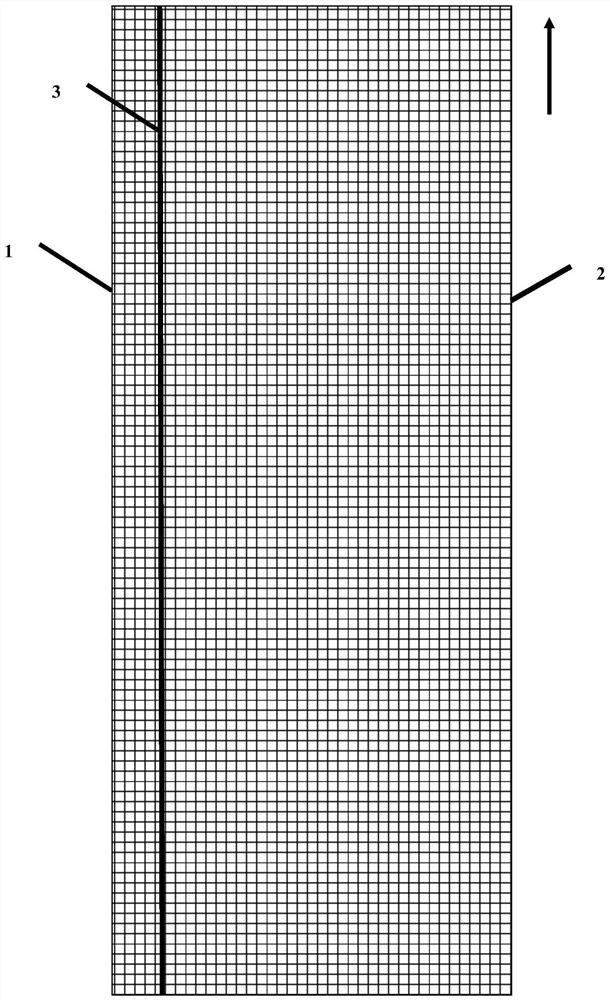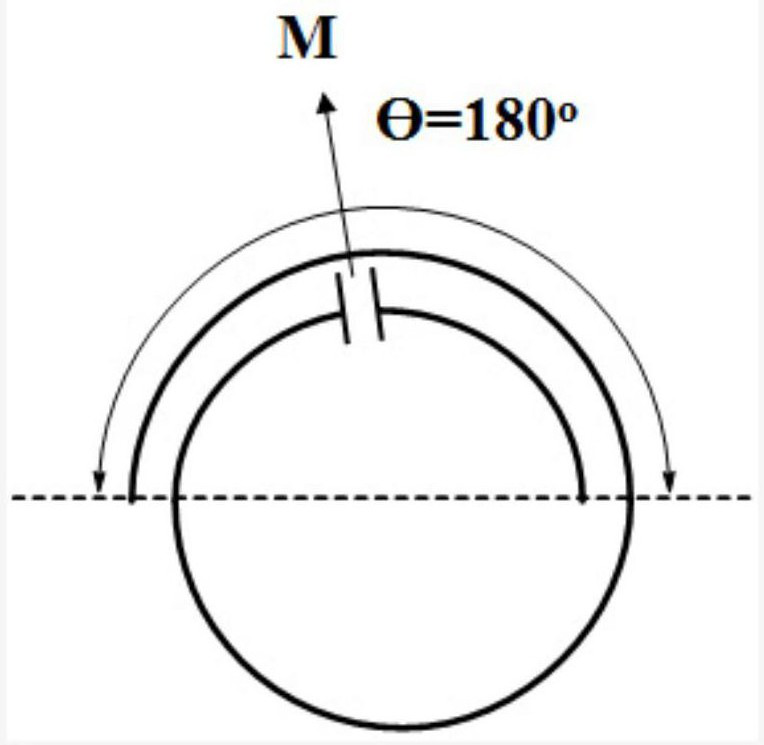Self-rolling shielding sleeve with double-layer structure and preparation method thereof
A double-layer structure, self-rolling technology, used in chemical instruments and methods, lamination, layered products, etc., can solve the problems of protective sleeves without shielding function, poor puncture resistance of sleeves, and heavy sleeves. , to achieve the effect of excellent electromagnetic shielding performance, excellent light aging resistance, and high puncture resistance
- Summary
- Abstract
- Description
- Claims
- Application Information
AI Technical Summary
Problems solved by technology
Method used
Image
Examples
Embodiment 1
[0047] Preparation of the first body:
[0048] The first warp yarn is composed of 3 multifilament yarns with a linear density of 1100D aramid long fibers combined at constant tension. The first weft yarn is 2 polyphenylene sulfide long fiber monofilaments with a monofilament diameter of 0.30 mm and 3 strands of 10 non-thermoplastic polyimide Amine yarn, woven into a plain weave tape structure in warp and weft, and at the same time along one free edge of the warp direction, 2 strands of white aramid long fibers are woven with a maximum diameter marking line, the minimum distance between the marking line and the free edge of the warp is 7 mm . Wherein, the weaving density of the first warp yarn is 30 strands / inch, and the weaving density of the first weft yarn is 30 strands / inch.
[0049] The woven first sheet-shaped woven fabric is sequentially passed through the treatment tank with a solid content of 20% anti-mold treatment liquid at a speed of 2 m / min, and a drying hot rolle...
Embodiment 2
[0059] Preparation of the first body:
[0060] The first warp yarn is combined by 6 strands of multifilament linear density 1000D polybenzoxazole long fiber at constant tension, and the first weft yarn is 1 thermoplastic polyimide long fiber monofilament with a monofilament diameter of 0.40 mm and 2 strands of 20 non-woven fabrics. Thermoplastic polyimide yarn, woven into a warp and weft twill weave tape structure, at the same time along a free edge of the warp direction, 2 strands of white aramid long fibers are woven with a maximum diameter marking line, and the shortest distance between the marking line and the free edge of the warp The distance is 10 mm. Wherein, the weaving density of the first warp yarn is 25 strands / inch, and the weaving density of the first weft yarn is 20 strands / inch.
[0061] The woven first piece of woven fabric is sequentially passed through the treatment tank with a solid content of 30% mildew treatment solution at a speed of 8 m / min, and a dryi...
Embodiment 3
[0071] Preparation of the first body:
[0072] The first warp yarn is combined by 4 non-thermoplastic polyimide long fibers with a multifilament linear density of 800D at constant tension, and the first weft yarn is a thermoplastic polyimide long fiber monofilament with a monofilament diameter of 0.45 mm, which is woven into warp and weft The plain weave belt structure is woven, and at the same time, a free edge along the warp direction is woven with 2 strands of white aramid long fibers with a maximum diameter marking line, and the shortest distance between the marking line and the free edge of the warp is 7 mm. Wherein, the weaving density of the first warp yarn is 30 strands / inch, and the weaving density of the first weft yarn is 30 strands / inch.
[0073] The woven first sheet-shaped woven fabric is sequentially passed through the treatment tank with a solid content of 20% mildew-proof treatment liquid at a speed of 5 m / min, and a drying hot roller at 250 ° C, equipped with...
PUM
| Property | Measurement | Unit |
|---|---|---|
| diameter | aaaaa | aaaaa |
| diameter | aaaaa | aaaaa |
| width | aaaaa | aaaaa |
Abstract
Description
Claims
Application Information
 Login to View More
Login to View More - R&D
- Intellectual Property
- Life Sciences
- Materials
- Tech Scout
- Unparalleled Data Quality
- Higher Quality Content
- 60% Fewer Hallucinations
Browse by: Latest US Patents, China's latest patents, Technical Efficacy Thesaurus, Application Domain, Technology Topic, Popular Technical Reports.
© 2025 PatSnap. All rights reserved.Legal|Privacy policy|Modern Slavery Act Transparency Statement|Sitemap|About US| Contact US: help@patsnap.com



